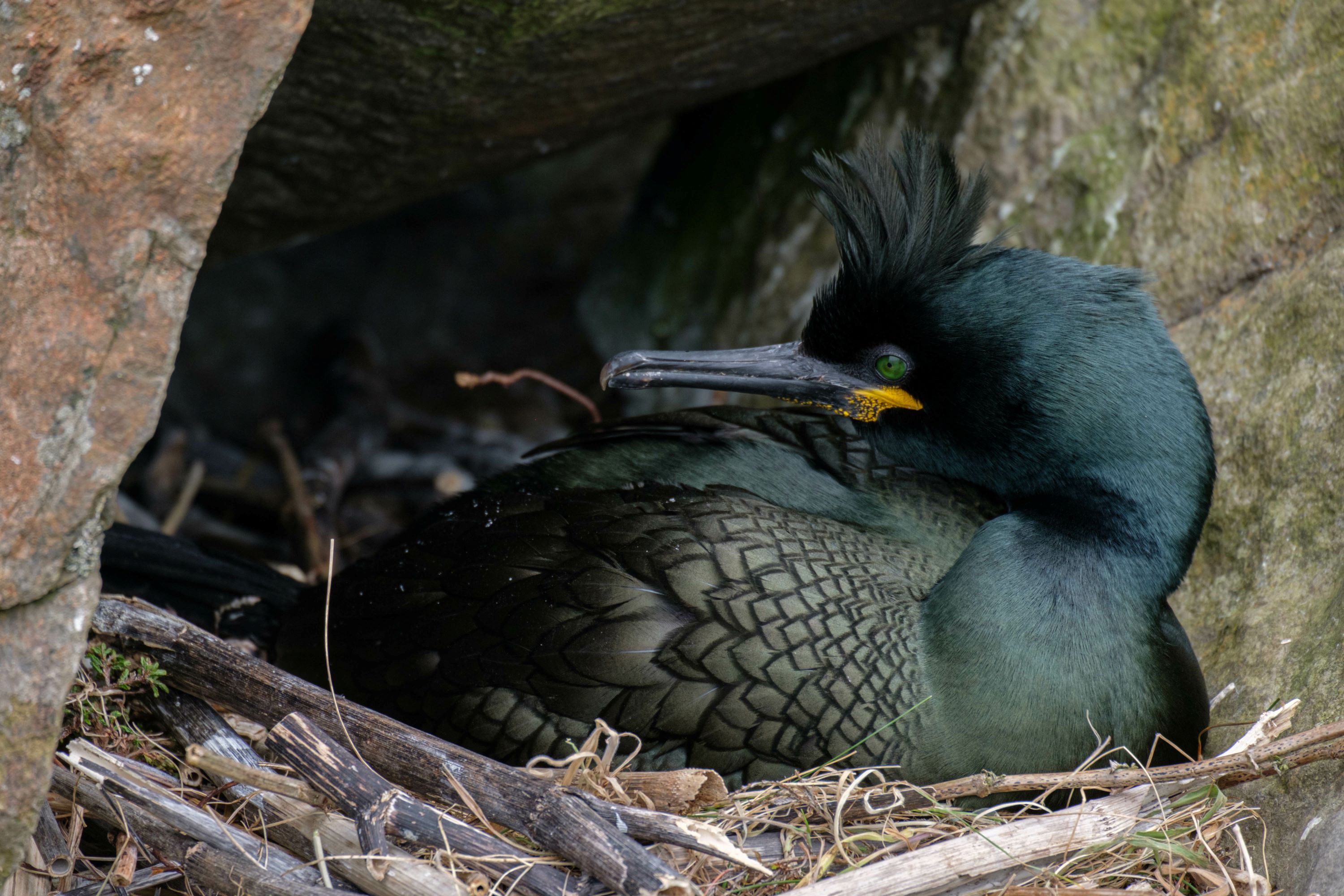
Genus Gulosus: The Intriguing World of Cormorants and Shags
Introduction to the Genus Gulosus
The Genus Gulosus, representing a unique lineage within the cormorant family, is exemplified by its sole species, the European Shag (Gulosus aristotelis). This monotypic genus, characterized by distinct morphological and behavioral traits, showcases the fascinating adaptability and specialization of seabirds within their marine environments.
Defining Characteristics of Gulosus
Gulosus aristotelis, the European Shag, is a medium-sized bird marked by its elongated body, long neck, and slender beak, adaptations perfect for its piscivorous lifestyle. The bird's plumage is predominantly dark, displaying a greenish iridescence. A notable feature is the crest on its head during the breeding season, a trait that sets it apart from other cormorant species.
Habitat and Geographical Distribution
The European Shag, as the sole representative of the Genus Gulosus, is primarily found along the rocky coastlines and islands of Europe. From the North Atlantic coasts to the Mediterranean and Black Sea, this species has adapted to a variety of coastal environments, showcasing the genus's ecological versatility.
Breeding and Nesting Habits
Gulosus aristotelis exhibits colonial breeding behaviors, often nesting on steep cliffs and rocky outcrops near the sea. This species constructs nests from seaweed and twigs, with breeding sites being reused and added to each year. Such nesting habits highlight the genus's ability to thrive in challenging coastal terrains.
Reproductive Behaviors
During the breeding season, the European Shag displays unique courtship behaviors, including the presentation of its crest and complex vocalizations. These behaviors are intrinsic to the genus's reproductive success and are vital for maintaining healthy populations.
Feeding Strategies and Diet
The European Shag's diet primarily consists of fish, reflecting the genus's specialization in marine foraging. Its feeding strategy involves diving from the water's surface, utilizing its streamlined body and webbed feet to navigate and chase prey underwater, a skill that defines the hunting prowess of the Genus Gulosus.
Adaptations to Aquatic Life
Members of the Genus Gulosus are adept swimmers, with their less waterproof feathers allowing for more efficient diving. The European Shag, in particular, demonstrates this genus's adaptation to an aquatic life, spending considerable time swimming and foraging in coastal waters.
Conservation and Environmental Challenges
As a monotypic genus, the conservation of Gulosus is intrinsically tied to the well-being of the European Shag. This species faces environmental challenges common to seabirds, including habitat disturbance and pollution. Conservation efforts are focused on protecting its coastal habitats and ensuring the sustainability of fish populations.
Gulosus in Cultural and Ecological Context
The European Shag of the Genus Gulosus holds a significant place in the cultural heritage of coastal Europe and is an important indicator of the health of marine ecosystems. The species' adaptation to coastal life exemplifies the ecological importance of seabirds in global biodiversity.
Conclusion: The Distinctive Genus Gulosus
In conclusion, the Genus Gulosus, through its sole species, the European Shag, offers a unique window into the life of specialized marine birds. Its adaptations to coastal living, specialized feeding habits, and distinctive breeding behaviors underscore the importance of understanding and conserving this singular genus. While its presence is limited to European waters, the story of Gulosus aristotelis resonates with bird enthusiasts globally, emphasizing the need for ongoing conservation efforts in maritime environments.